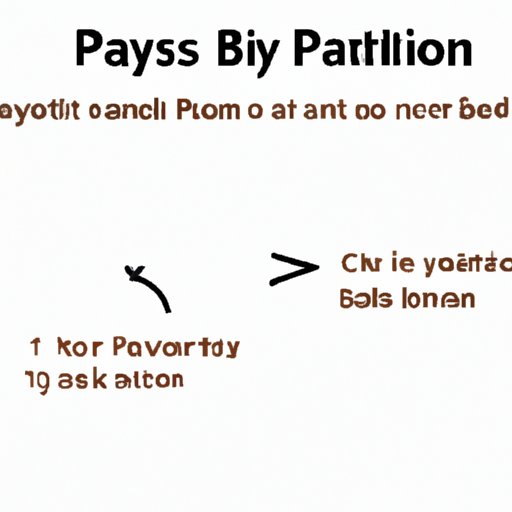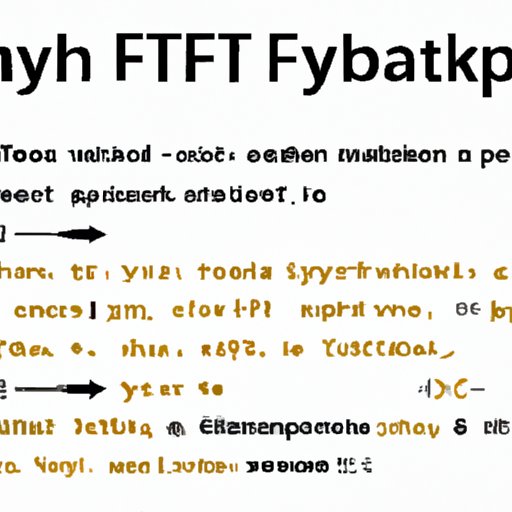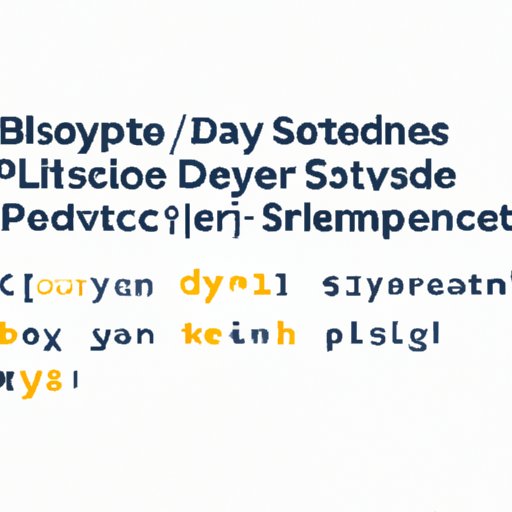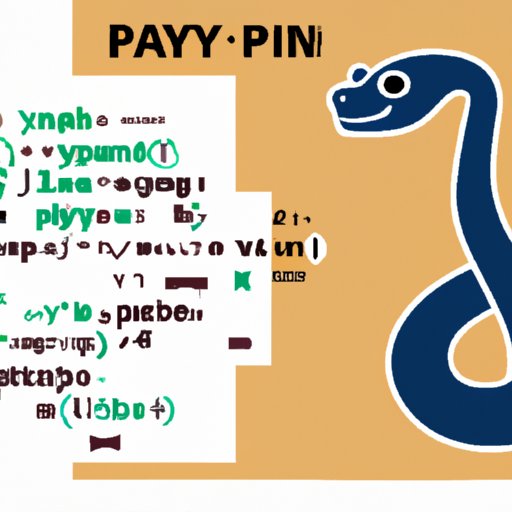Introduction
An if statement is a type of conditional statement in programming languages such as Python. It allows a programmer to execute a certain set of instructions if a given condition is true. In other words, it’s a way of telling the computer to do something only if a certain condition is met. This article will provide a comprehensive guide on how to start writing an if statement in Python, including explanations of the syntax and structure of if statements and examples of real-world applications.

Explaining the Basics of Python If Statements
Before diving into the specifics of how to write an if statement in Python, it is important to understand the basics of what an if statement is and how it works.
What is a Python If Statement?
A Python if statement is a control flow statement that evaluates a condition and executes a block of code if the condition is true. The condition can be any expression that evaluates to a Boolean value – either True or False. If the condition is true, then the code within the if statement will be executed; if the condition is false, then the code within the if statement will not be executed.
How Does An If Statement Work?
When an if statement is encountered by the interpreter, it first evaluates the condition. If the condition is true, then the code within the if statement will be executed; if the condition is false, then the code within the if statement will be skipped over. This process is known as “conditional execution”.
Step-by-Step Guide to Writing an If Statement in Python
Now that you have a basic understanding of what an if statement is and how it works, let’s take a look at the steps involved in writing an if statement in Python.
Defining Your Variables
The first step in writing an if statement in Python is to define your variables. Variables are used to store values, and they can be used in conditions to determine whether an if statement should be executed. For example, if you want to check if a number is greater than 5, you would need to define a variable that stores the number.
Creating Your Condition
Once you have defined your variables, you can create the condition for your if statement. The condition is an expression that evaluates to either True or False. It should be written in such a way that it accurately reflects the logic of your program. For example, if you want to check if a number is greater than 5, you would need to write a condition such as “x > 5”.
Writing Your Code
Once you have defined your variables and created your condition, you can begin writing the code for your if statement. This code should be written in such a way that it will be executed if the condition is true. For example, if you want to print out a message if a number is greater than 5, you would need to write a code such as “print(‘The number is greater than 5’)”.

An Overview of the Syntax and Structure of If Statements in Python
Now that you know how to write an if statement in Python, let’s take a look at the syntax and structure of if statements in Python.
The General Syntax of an If Statement
The general syntax of an if statement in Python is as follows:
if condition:
statement(s)
The condition is an expression that evaluates to either True or False. If the condition is true, then the statement(s) within the if statement will be executed. If the condition is false, then the statement(s) within the if statement will not be executed.
Understanding the Different Components of an If Statement
An if statement consists of three components: the keyword “if”, the condition, and the statement(s). The keyword “if” indicates the start of an if statement. The condition is an expression that evaluates to either True or False. The statement(s) is the code that will be executed if the condition is true.
Understanding When and How to Use Python If Statements
Now that you know the basics of how to write an if statement in Python, let’s take a look at when and how to use them effectively.
Identifying Situations Where an If Statement is Appropriate
Python if statements are most often used to control the flow of a program based on the result of a condition. They can be used in a variety of situations, such as checking user input, verifying the validity of data, and controlling the flow of a loop.
Tips for Writing Effective If Statements
There are several tips that can help you write effective if statements in Python. First, make sure that the condition you are testing is clearly defined and accurate. Second, keep your code simple and readable. Finally, test your code thoroughly to make sure that it is working correctly.

Strategies for Debugging Python If Statements
Debugging if statements in Python can be a challenging task. Fortunately, there are some strategies that can help you troubleshoot your code and identify errors.
Common Mistakes to Avoid
When writing if statements in Python, there are several common mistakes to avoid. These include forgetting to include the colon after the condition, using incorrect indentation, and using incorrect syntax. Additionally, make sure that you are using the correct comparison operators (e.g. == instead of =).
Strategies for Troubleshooting Your Code
If you are having trouble debugging your code, there are several strategies that can help. First, try running your code through a debugger to identify any errors. You can also try printing out the results of your condition to make sure that it is evaluating correctly. Finally, make sure that you are testing all possible scenarios to ensure that your code is functioning properly.
Examples of Real-World Applications of Python If Statements
Python if statements can be used in a variety of real-world applications. Let’s take a look at two examples of how if statements can be used in web development and machine learning.
Examples of If Statements in Web Development
If statements can be used in web development to control the flow of a program based on user input. For example, if a user enters a valid email address, the program can display a confirmation message; if the user enters an invalid email address, the program can display an error message.
Examples of If Statements in Machine Learning
If statements can also be used in machine learning to control the flow of a program based on predicted outcomes. For example, if a machine learning model predicts that a customer is likely to purchase a product, the program can display a promotional offer; if the model predicts that the customer is unlikely to purchase the product, the program can display a different offer.
Conclusion
In conclusion, if statements are an essential part of programming in Python. By understanding the basics of if statements, including the syntax and structure, as well as when and how to use them effectively, you can write effective code that is easy to read and debug. Additionally, you can use if statements in a variety of real-world applications, such as web development and machine learning.
Summary of Main Points
This article provided a comprehensive guide on how to start writing an if statement in Python, including explanations of the syntax and structure of if statements, as well as when and how to use them for effective programming. Additionally, tips for writing effective if statements and strategies for debugging were discussed, as well as examples of real-world applications.
Final Thoughts
If statements are a powerful tool for controlling the flow of a program in Python. By understanding the basics of if statements, as well as when and how to use them effectively, you can write efficient and reliable code.
(Note: Is this article not meeting your expectations? Do you have knowledge or insights to share? Unlock new opportunities and expand your reach by joining our authors team. Click Registration to join us and share your expertise with our readers.)
